Securing a new graphics card has been tough in the last couple of years. The issues caused by the semiconductor shortage are lingering. On top of that, cryptocurrency miners have also stretched the GPU market to its limits in recent times. However, the landscape is starting to look better. Mining Ethereum on GPUs is no longer going to be possible, stocks are increasing and prices are coming back down.
Even while GPUs kept fluctuating in price, both Nvidia and AMD kept the market buzzing with new graphics cards. And it’s starting to get truly competitive again as a new contender is getting ready to make a splash with Intel Arc graphics cards now finally available.
Our collection of the best graphics cards reflects the ever-evolving GPU market. We’ve included dozens of options ranging from the best overall to the best value graphics card. These are our picks for the best GPUs across different categories:
Before we proceed to individual items, let’s take a quick look at a few important things to remember while shopping for a new GPU:
- Buy a graphics card that suits your needs, not because it’s new or the fastest.
- Check for the manufacturer’s ‘Recommended Power Requirement’ before buying the PSU, not the ‘Total Graphics Power’ (TGP) of the GPU.
- There’s more to a GPU than just its clock speed and total memory. Check the specifications table for details like memory bandwidth, TGP, and more.
- Check if your PC case is big enough to fit the graphics card you’d like to buy. The GPU length clearance is usually mentioned by the case manufacturer.
- Know your gaming needs before picking a GPU to save money. For instance, an RTX 3080 for 1080p gaming would just be overkill.
- Getting the best possible gaming GPU isn’t enough for gaming. Make sure your other core components are also good enough to avoid any bottlenecks.
- All GPUs mentioned in this list are based on the reference model a.k.a ‘Founders Edition’ or the base model with stock speeds.
- RT, DLSS, and other acronyms: Not all GPUs support ray-tracing (RT), Deep Learning Super Sampling (DLSS), etc. Check a particular GPU’s product page to find out.
Best graphics card: Nvidia GeForce RTX 3080
| Specification | Nvidia GeForce RTX 3080 |
|---|---|
| GPU | Ampere | GA102 |
| GPU Cores | 8704 |
| Base Clock | 1.44GHz |
| Boost Clock | 1.71GHz |
| Memory | 10 GB GDDR6X |
| Memory Bandwidth | 760 GB/s |
| Memory Interface Width | 320-bit |
| RT Cores | 68 |
| TDP (W) | 320 |
| Required System Power (W | 750 |
| GPU Length | 285mm |
The Nvidia GeForce RTX 3080 graphics card is our pick for the best GPU you can buy right now. It delivers a huge performance boost over the RTX 20 series cards from the previous generation. The RTX 3080 is based on Nivida’s Ampere architecture and supports new generation Ray-Tracing & Tensor cores. The RTX 3080’s GPU engine has a base clock of 1.44GHz and a boost clock of 1.71GHz. The card has 10GB GDDR6X VRAM to handle even the most demanding AAA titles out there. The VRAM is not as much as what the RTX 3090 offers, but it’s plenty to handle textures at 4K resolution too. The GDDR6X runs at 19 Gbps in the RTX 3080, which combined with the 320-bit interface, yields 760 GB/s of bandwidth.
The 8nm GPU also features 8,704 CUDA cores and 68 RT cores, allowing it to deliver better overall performance. Even with ray-tracing enabled, the RTX 3080 produces more frame rates than what, say, a top-of-the-line RTX 20-series GPU would manage to produce without it. The RTX 3080 supports a long list of features like PCI Express Gen 4, Nvidia DLSS, Nvidia Reflex, Vulkan RT API, OpenGL 4.6, VR, and more. The GPU has a single HDMI 2.1 port along with three DisplayPort 1.4a.
The RTX 3080 GPU will take up to 2 PCI slots in your PC case and has a maximum length of 285mm. The overall footprint of the card is relatively high, so make sure your PC case has enough space to accommodate this GPU before buying. Nvidia rates the maximum GPU temperature of the RTX 3080 card at 93°C. It’s not a surprise considering it has a TGP rating of 320W. Perhaps it’s time to upgrade your PSU since Nvidia recommends using a 750W unit for a system running an RTX 3080. It’s known to run a little hot, so it’s best paired with a PC case with good airflow. A custom cooling loop with a dedicated water block for it will do wonders.
The GeForce RTX 3080 is not the most powerful GPU in Nvidia’s current lineup. The RTX 3090 holds that crown with up to 20 percent more performance on paper. Assuming you don’t run into any CPU bottlenecks, that performance improvement will be anywhere between 10-15 percent in real-world use cases. For $700, we think RTX 3080 is the best high-end graphics card on the market. It delivers next-gen performance without a massive increase in price. It’s a solid upgrade for anybody who’s still using a GTX 1080 Ti or lower.
Best AMD graphics card: AMD Radeon RX 6800 XT
| Specification | AMD Radeon RX 6800 XT |
|---|---|
| GPU | Navi 21 | XT |
| GPU Cores | 4608 |
| Base Clock | 2.01GHz |
| Boost Clock | 2.25GHz |
| Memory | 16GB GDDR6 |
| Memory Bandwidth | 512 GB/s |
| Memory Interface Width | 256-bit |
| RT Cores | 72 |
| TDP (W) | 300 |
| Required System Power (W | 750 |
| GPU Length | 267mm |
The Radeon RX 6800 XT is the top contender for the best graphics card from Team Red. It’s our pick for the second-best graphics card you can buy on the market right now. It enters the fray with 72 CUs and 4,608 GPU cores. The GPU runs at 2,015MHz while boosting up to 2,250MHz. We expect both the game clocks and the boost clock to increase ever so slightly with the Rage Mode enabled. Rage Mode, for those of you who don’t know, is a performance preset for the RX 6800 XT and the RX 6900 XT. It allows the card to operate at higher clock speeds by taking advantage of any headroom available for both power and fan-speed limits. This requires a potent cooling solution, though.
The RX 6800 XT comes with 16GB GDDR6 memory across a 256-bit bus. The 7nm GPU has a total memory bandwidth of 512GB/s, falling slightly behind the RTX 3080’s raw bandwidth of 760GB/s. The RX 6800 XT has a 300W TGP with a recommended power supply rating of 750W. It supports ray-tracing too, however the RT performance is arguably better on the RTX 3080 with the inclusion of DLSS.
The RX 6800 XT trade blows with Nvidia’s second-tier Ampere card. It costs less, delivers good 4k performance, and has more VRAM than the RTX 3080. AMD is also working behind the scenes to improve FidelityFX Super Resolution to enable these GPUs to do more. Sure, it’s not as widespread as Nvidia’s DLSS tech, but AMD is promising a better future for its support. We’ve already started seeing a lot of new games taking advantage of FSR, and we believe the list will grow over time.
Even without the extras, the RX 6800 XT leaves AMD in a strong position. It leaves us wanting more from the RDNA 3 based 7000 series GPUs that are expected in the future. Until then, the RX 6800 XT is going to be our pick for the best AMD GPU to buy. Nvidia currently has an upper hand with its ray-tracing performance. The RX 6800 XT is barely ahead of the RTX 3070 when it comes to ray-tracing. Hopefully, that’ll change as more games get optimized for the AMD cards.
There’s also the RX 6900 XT — AMD’s most powerful GPU this year. We didn’t go with the Radeon RX 6900 XT as our best pick for the same reasons why we didn’t pick the RTX 3090. The real-world performance increase of, say, up to seven percent isn’t enough to justify more than a 50 percent increase in price. The RX 6700 XT, on the other hand, is a solid card that can handle games at 1400p and even 4K resolution as long as you don’t mind tweaking some of the graphics settings.
Best Intel graphics card for gaming: Intel Arc A770 Limited Edition 16GB
| Specification | Intel Arc A770 16GB Limited Edition |
|---|---|
| GPU | Alchemist | DG2-512 |
| Xe Cores | 32 |
| Base Clock | 2100 MHz |
| Boost Clock | 2100 MHz |
| Memory | 16 GB GDDR6 |
| Memory Bandwidth | 512.0 GB/s |
| Memory Interface Width | 256-bit |
| RT Cores | 32 |
| TDP (W) | 225 |
| Required System Power (W) | 550 |
What’s this? A graphics card from Intel?! That’s correct, there is now a third player in the space and it’s actually a lot better than many were expecting. The best of the bunch is Intel’s own Arc A770 “limited edition” which isn’t really limited, but Nvidia already coined the Founders Edition phrase. So Intel needed something different. It isn’t the only A770 on the market, but it’s the only one right now that comes with 16GB of VRAM which is certainly worth the slight price premium. That additional memory comes in handy in more demanding games and if you turn to creative workloads.
This isn’t designed to take on the best from Nvidia, nor even AMD. It’s firmly a mid-range GPU but one that also packs a raft of modern features. It’s made up of 32 Xe cores, 8 render slices, 32 ray tracing units, and 512 XMX engines. In simpler terms, this translates to a graphics card that is perfectly capable of high frame rate gaming at 1440p even with graphical settings turned up. It shouldn’t be the first port of call for ray tracing, but the A770 handles it surprisingly well. In some games that support DirectX 12 ray tracing the A770 can match or surpass some of Nvidia’s older, but high-end RTX GPUs.
For creative work, the A770 is well-equipped. It has support for HDMI 2.1 and DisplayPort 2.0 external displays and is one of the first desktop graphics cards to have a hardware AV1 encoder. Uses of AV1 are still limited for the time being, but the new codec will be widely adopted in the future and Intel is providing an affordable way to get in on that. The only other graphics card on sale at this time with an AV1 encoder is the RTX 4090 and which costs more than four times as much as the A770.
Even though it’s a reference design, the A770 Limited Edition runs quiet, even with a fairly high 225w TBP. Out of the box it’ll be set to 190W, and increasing the power limit alongside some simple performance tweaks can unlock a little extra performance. There are some drawbacks, such as no hardware support for DX9, and performance in DX11 games can be inconsistent. But it was promised to deliver RTX 3060-esque performance and it does just that. All while being affordable. This is the most expensive version and it still comes in at $349.
Best value for money graphics card: Nvidia GeForce RTX 3060 Ti
| Specification | Nvidia GeForce RTX 3060 Ti |
|---|---|
| GPU | Ampere | GA104 |
| GPU Cores | 4864 |
| Base Clock | 1.41GHz |
| Boost Clock | 1.66GHz |
| Memory | 8GB GDDR6 |
| Memory Bandwidth | 448 GB/s |
| Memory Interface Width | 256-bit |
| RT Cores | 38 |
| TDP (W) | 200 |
| Required System Power (W | 550 |
| GPU Length | 242mm |
“Ampere for everyone!” is our tagline for the RTX 3060 Ti. That’s how much value the GPU offers. This GPU took the spotlight away from the RTX 3060 for further bridging the gap between the mid-range cards and the RTX 3070. The RTX 3060 Ti features the GA104 GPU with a total of 4,864 CUDA cores. Not only is it a significant departure from RTX 2060 Super, but it has more CUDA cores than even the RTX 2080 Super. It features a base clock of 1,415MHz and a boost clock of 1,665MHz. Aftermarket cards like the Zotac RTX 3060 Ti Twin Edge OC also feature overclocking on the menu.
The RTX 3060 Ti has 8GB GDDR6 memory with a bandwidth of 448GB/s. It’s the same memory bandwidth as the RTX 3070. We also get 38 RT and 152 Tensor cores with this GPU. It has 200W TGP and uses Nvidia’s 12-pin connector. All the specs come together to help the RTX 3060 Ti deliver impressive gaming performance. The GPU is capable of handling games at 1080p, 1440p, and even 4K with marginal sacrifices to graphics settings. Modern titles will smoothly push through the 60FPS mark at 1440p.
It’s safe to say the RTX 3060 Ti is similar to the RTX 3070 in many ways. RTX 3070 offers an improvement of, say, 10-20FPS in a lot of cases over the RTX 3060 Ti. Although the gap is narrower in few instances with both GPUs pushing almost the same amount of frames. The RTX 3060 Ti greatly benefits from DLSS too. It’s the better GPU to buy unless you’re dead set on playing games at 4k, of course.
The RTX 3060 Ti will fetch you 60FPS+ in practically all of today’s biggest PC games at 1080p or 1440p with maximum graphics settings. It’s also 20 percent cheaper than the RTX 3070, making it our pick for the best value graphics card you can buy right now. It’s a great entry into the Ampere family, and it’s likely to keep serving you high frame rates for many years to come.
All Ampere cards deliver a generational leap in terms of performance, and the RTX 3060 Ti is no different. It just happens to do that for those on a slimmer budget. It topples the RTX 2080 Super significantly in every test, offering the kind of performance gap we’ve come to expect from Nvidia’s Ampere cards.
Extreme performance: Nvidia GeForce RTX 4090
| Specification | Nvidia GeForce RTX 4090 |
|---|---|
| GPU | Ada Lovelace | AD102 |
| GPU Cores | 16,384 |
| Base Clock | 2235 MHz |
| Boost Clock | 2520 MHz |
| Memory | 24GB GDDR6X |
| Memory Bandwidth | 1,018 GB/s |
| Memory Interface Width | 364-bit |
| RT Cores | 128 |
| TDP (W) | 450 |
| Required System Power (W) | 850 |
The Nvidia RTX 4090 is the most powerful consumer graphics card money can buy. It represents the best of what Nvidia has to offer and it easily topples everything else on the market when it comes to raw performance. The chances are that you really don’t need one of these, especially if you’re a gamer. The RTX 4090 is so insanely powerful that neither 4K nor ray tracing in current titles can push it close to its limits. Most of the time it’s running in third gear.
The RTX 4090 makes more sense for content creators and those running applications that will benefit from massive GPU acceleration. It’s the first Nvidia GPU to come with a hardware AV1 encoder, though the NVENC encoder is no slouch either. For example, using the RTX 4090 with DaVinci Resolve, we managed to encode a 4:-30 long 4K60 video at 40,000 bitrate using NVENC in just 96 seconds. The massive horsepower also means you get no slowdowns scrubbing timelines and applying edits, even without using proxies or lower-resolution timelines. It is unbelievable.
The RTX 4090 is built on Nvidia’s new Ada Lovelace architecture and houses the colossal AD102 GPU with 16,382 Cuda cores, 24GB GDDR6X VRAM, a base clock of 2.23 GHz, and Nvidia’s 3rd generation ray tracing cores. It’s the first Nvidia GPU to support DLSS 3.0, too, and has HDMI 2.1 outputs on the back. DisplayPort is limited to 1.4, which is fine for now, and it runs off a PCIe 4 x16 slot on your motherboard. It’s rated at 450w TGP, so it’s thirsty and uses the new 12VHPWR power connector. This is better in the long run because a single cable from an ATX 3.0 power supply will be sufficient (capable of delivering up to 600W) but for now, Nvidia includes a rather necessary, but still unfortunate adapter in the box. You’ll need a minimum 850W power supply, though we’d recommend at least 1000W to give yourself some headroom.
This goliath is physically massive, too. The Founders Edition is probably the smallest of them all, but even so, it consumes three PCIe slots and will fill out a mid-tower case with ease. Third-party cards are even larger, some comically so. The actual PCB isn’t particularly big, but the amount of heatsink and accompanying fans to cool it is extraordinary. It does mean you need to be a bit careful with your PC design, though, if you’re wanting one of these.
All told, the Nvidia RTX 4090 quite probably isn’t for you. It’s overkill for gaming and right now at least makes the most sense for professional work and content creation. It’s also going to cost at least $1,600 to get one. Everything about the RTX 4090 is large, but it’s undeniably impressive. There simply isn’t anything that can compete with this right now.
Best graphics card for 1440p gaming: Nvidia GeForce RTX 3070
| Specification | Nvidia GeForce RTX 3070 |
|---|---|
| GPU | Ampere | GA104 |
| GPU Cores | 5888 |
| Base Clock | 1.5GHz |
| Boost Clock | 1.7GHz |
| Memory | 8GB GDDR6 |
| Memory Bandwidth | 512 GB/s |
| Memory Interface Width | 256-bit |
| RT Cores | 46 |
| TDP (W) | 220 |
| Required System Power (W | 650 |
| GPU Length | 242mm |
Right now if you want to game at 1440p then you want to get yourself an RTX 3070. It comes with the GA104 GPU and brings 5,888 CUDA cores with it. That’s a significant upgrade over the RTX 2080 Ti and its 4,352 CUDA cores. It also features 46 RT cores and 184 Tensor cores.
With a boost clock of 1,725MHz and 8GB GDDR6 VRAM, the RTX 3070 comes close to the RTX 3080 in the 30-series family. However, it has the same 448GB/s memory bandwidth as the RTX 3060 Ti we talked about earlier in this collection. The RTX 3070 has 220W TGP and Nvidia recommends a 650W power unit for any accompanying builds. It comes with a 12-pin connector, but you’ll get a single 8-pin to 12-pin adapter in the box.
What’s most impressive about the RTX 3070 is that it beats the RTX 2080 Ti in more ways than you’d imagine. We’re talking about a third-tier GPU from the Ampere family going against the top-tier Turing GPU. At a recommended price of $499, it’s not the most affordable graphics card on the market, but it’s also competitive against a top-tier GPU from the previous generation for half the price. DLSS is particularly impressive at higher resolutions and it makes these already impressive cards look better. While the RTX 40 series is imminent and may well replace the RTX 3070, you can still buy one safe in the knowledge you’ll have a great time for many years to come.
For something a little different we recommend you check out ASUS’ custom RTX 3070. It uses Noctua’s premium fans for cooling, and looks, well, different from other GPUs on the block. ASUS says it also runs cooler than both the Founders Edition and other partner OEM cards. And it’s brown.
NVIDIA RTX 3070

The perfect choice if you’re maxing out at 1440p. The 3070 has impressive performance and is significantly more affordable than a 3080.
Best entry-level graphics card: Nvidia GeForce GTX 1660 Super
| Specification | Nvidia GeForce GTX 1660 Super |
|---|---|
| GPU | Turing | TU116 |
| GPU Cores | 1408 |
| Base Clock | 1.5GHz |
| Boost Clock | 1.8GHz |
| Memory | 6GB GDDR6 |
| Memory Bandwidth | 336 GB/s |
| Memory Interface Width | 192-bit |
| RT Cores | NA |
| TDP (W) | 125 |
| Required System Power (W | 450 |
| GPU Length | 144mm |
We understand not everyone is looking for the absolute best when it comes to graphics cards. There are gamers who still enjoy spending time playing casual or Esports titles that don’t necessarily take a toll on your GPU. We think the RTX 1660 Super is perfect for that use case. It’s not the best graphics card on the block, but it’s enough to serve you a few years as long as you don’t play demanding titles at 1400p. With the GTX 1660 Super, we’re also looking at a considerably lower price, dipping closer to $200. The GTX 1660 Super is based on the Turing architecture and uses a variant of the TU116 silicon from 1660. It’s based on the 12nm FFN process and consists of 6.6 billion transistors.
The GTX 1660 Super has a base clock of 1,530MHz and a boost clock of 1,785MHz. It has 6GB GDDR6 VRAM and 336GB/s bandwidth. It’s recommended this be used with a 500W PSU or above since it has 125W TGP. You don’t need a high-power PSU to run a PC with this GPU, so that’s an advantage too. Its power usage is identical to that of AMD’s Navi 14 chips made using TSMC 7nm FinFET. The GTX 1660 Super also has enhanced Turing NVENC, making it a great choice for streaming.
The increasing prices of slightly better-performing cards like RTX 2060 or RX 5500 XT make them less attractive. The GTX 1660 Super offers more value now, especially when you’re not looking to get a generational leap in performance. It trails the more expensive 1660Ti with its 1080p performance. Games like League of Legends, Valorant, CS:-GO, etc. will run just fine on this GPU. You’ll have a great experience as long as you’re not expecting the GTX 1660 Super to compete with the likes of newer Ampere GPUs. The best thing about this GPU is that it doesn’t demand a sophisticated cooling solution. Any build with decent airflow should be enough to push this GPU to its limits at stock settings.
As a GTX-series card, the 1660 Super doesn’t support ray tracing. It doesn’t have the RT cores to deliver ray-traced graphics. But other than that and the lack of DLSS you get a lot of graphics card for a very attractive price.
Final Thoughts
We think it’s RTX 3080 that deserves a spot in your next high-end gaming PC build. It delivers an incredible gen-on-gen performance increase, making the last-gen RTX 2080 Ti look like a mid-range GPU. The RTX 3070 is also a fantastic GPU if you’re satisfied with 1440p gaming. AMD, on the other hand, also managed to keep up this time around with the Radeon RX 6800 XT. It comes close to the performance of the RTX 3080 GPU for less.
If you’re building a complete system don’t forget to buy peripherals to go with it like monitors, keyboards, webcams, etc. There’s never been a better time to be into PC building, and the choice is only going to get better in the coming months.

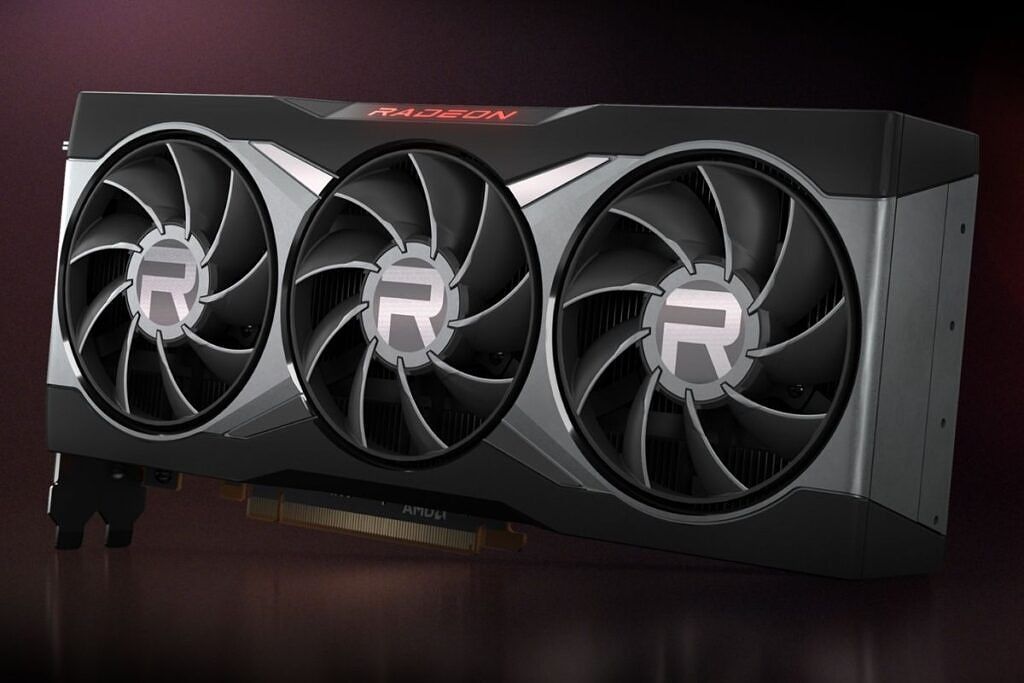
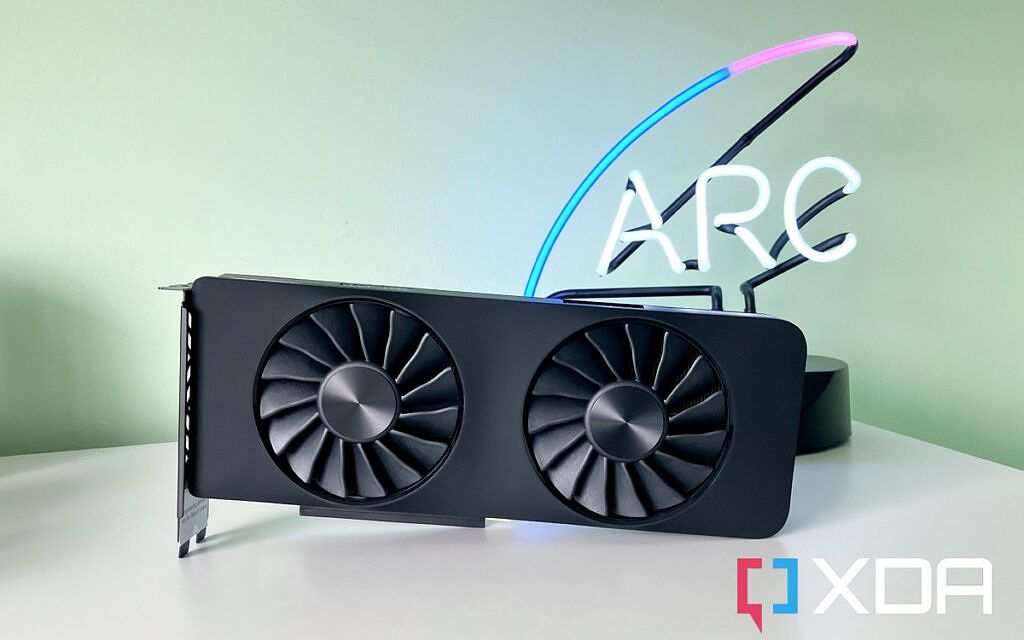
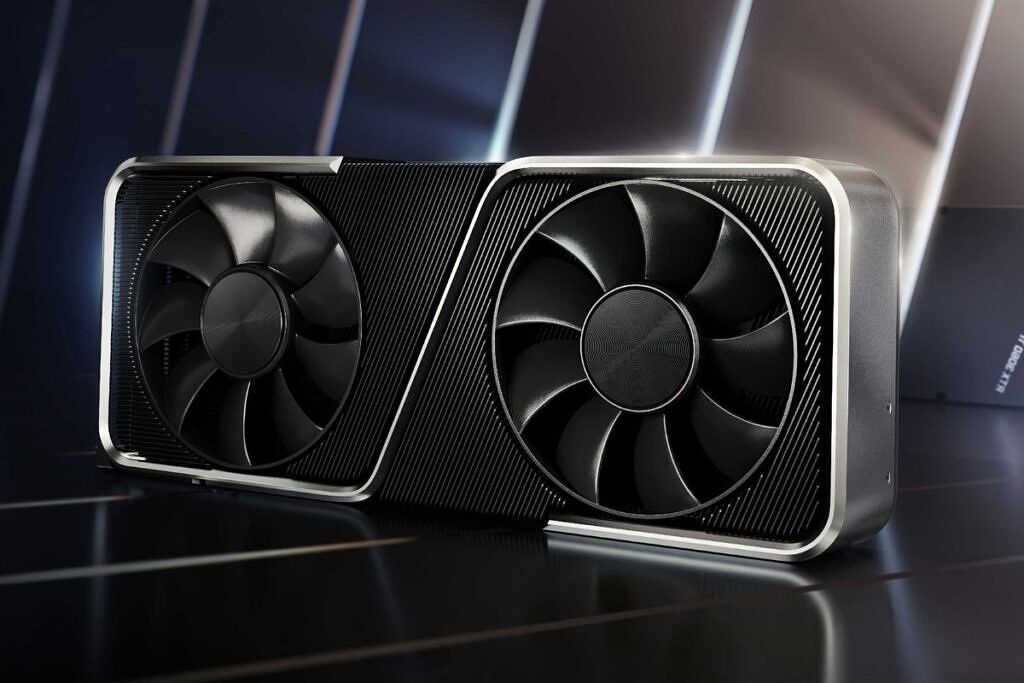
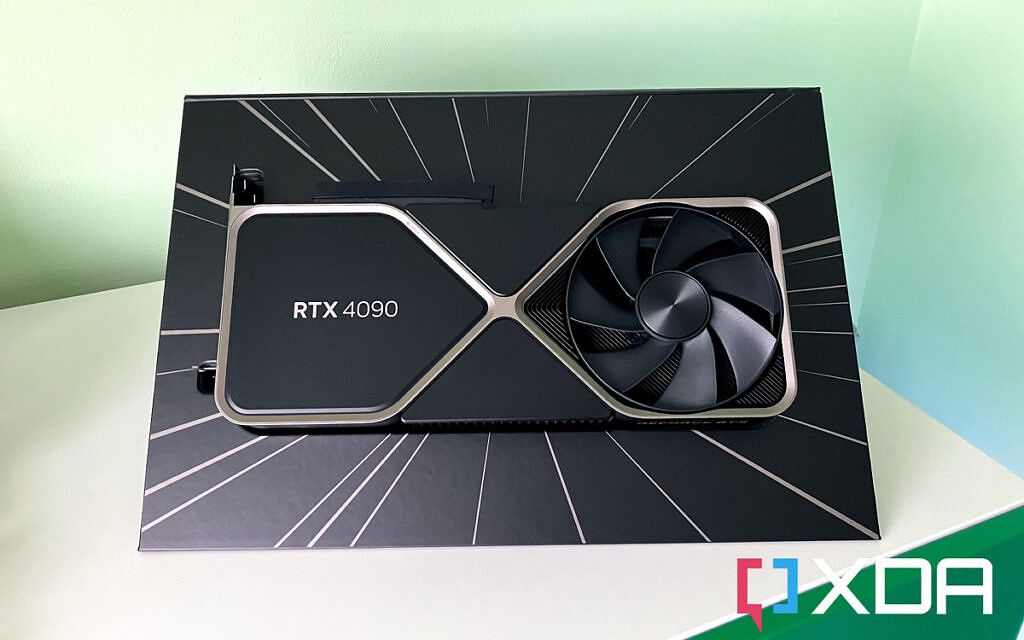
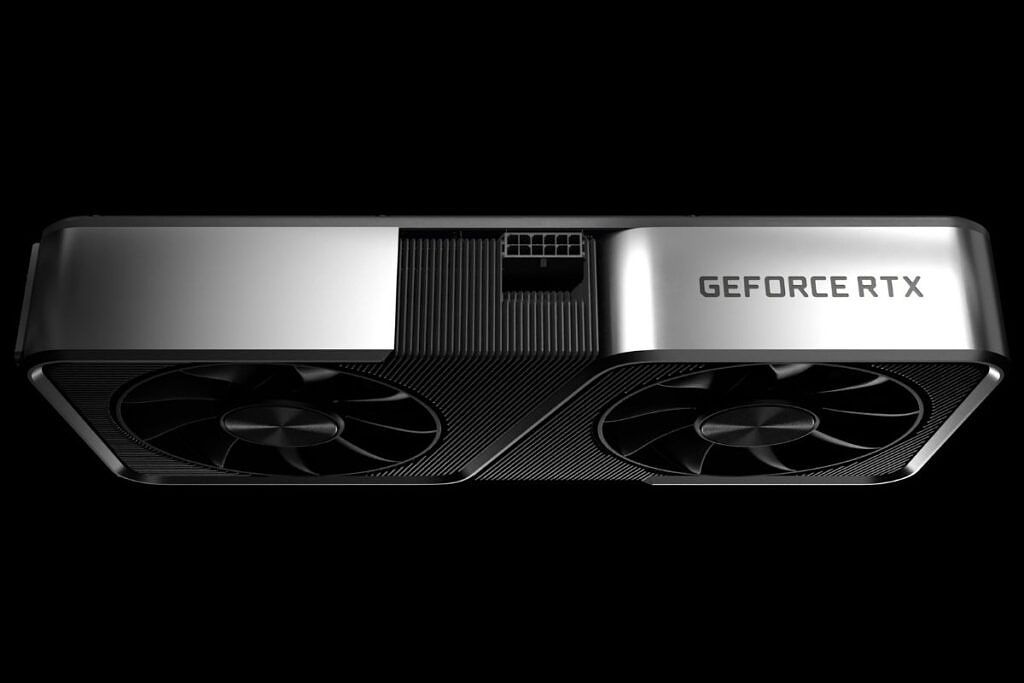
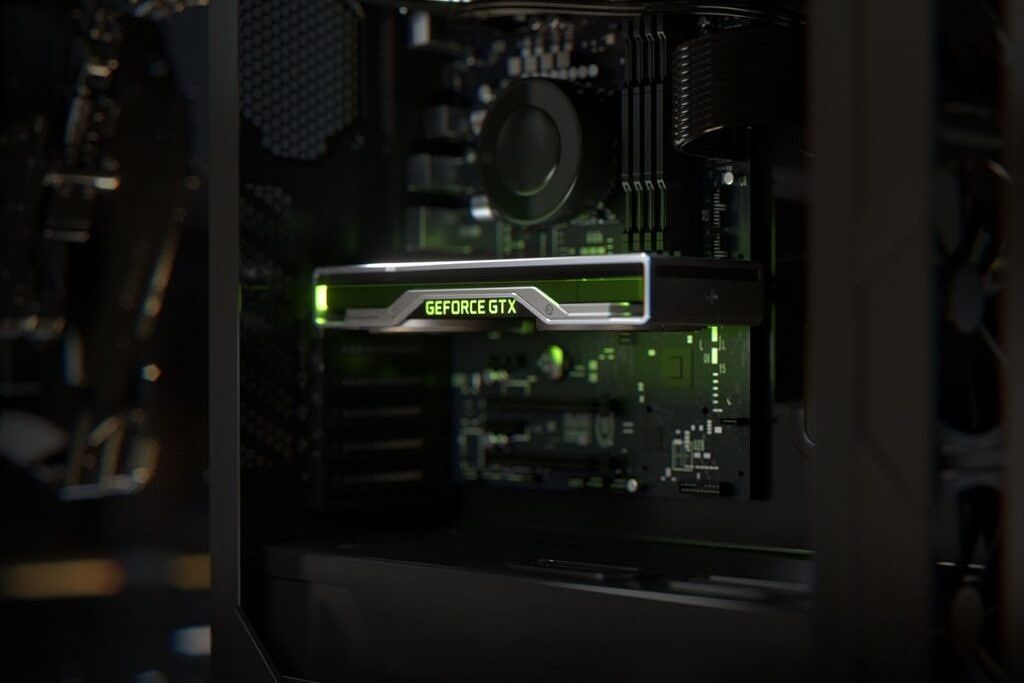

نحن نحب سماع آرائكم!
شاركنا رأيك أو اطرح سؤالاً في قسم التعليقات أدناه